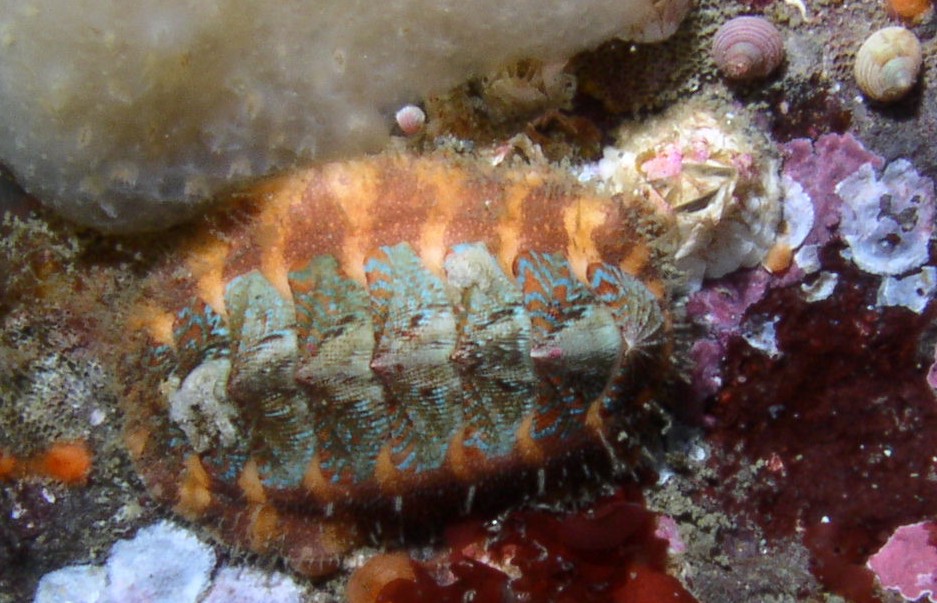How to Distinguish from Similar Species: Mopalia ciliata and M. hindsii also have the posterior cleft in the girdle, but M. ciliata has strap-shaped girdle hairs and M. hindsii has no pronounced ridge separating the c
entral and lateral areas of the plates, plus neither has M. spectabilis' plate coloration.
Geographical Range: Kodiak Island, Alaska to Baja California, Mexico
Depth Range: Intertidal to 10 m
Habitat: Under rocks and ledges, often on exposed coasts
Biology/Natural History:
This species
feeds on sponges, hydroids, bryozoans, and tunicates. It is
often
found feeding on the red social tunicate Metandrocarpa
taylori. Some of these as well as tube
worms may encrust
its plates. A scaleworm may be in the mantle
cavity. M.
ferreirai may actually be part of this species.
| Return to: | |||
| Main Page | Alphabetic Index | Systematic Index | Glossary |
References:
Dichotomous Keys:Kozloff 1987, 1996 (see also Baldwin's key)
General References:
Harbo,
1997
O'Clair
and O'Clair, 1998
Sept,
1999
Scientific Articles:
Cowan, G.I. and I. McT. Cowan, 1977.
A new chiton of the genus Mopalia from the
northeast Pacific coast. Syesis 10: pp 45-52
Kelly, R.P., I.N. Sarkar, D.J. Ernisse, and R. DeSalle, 2007. DNA barcoding using chitons (genus Mopalia). Molecular Ecology Notes 7: 177-183
Web sites:
General Notes and Observations: Locations, abundances, unusual behaviors:
Authors and Editors of Page:
Dave Cowles (2008): Created original page
CSS coding for page developed by Jonathan Cowles (2007)
